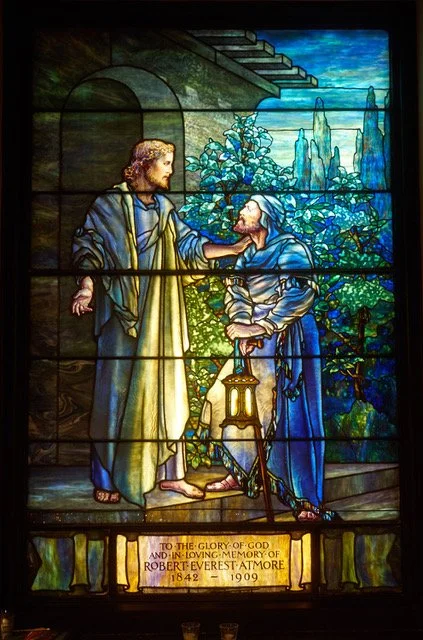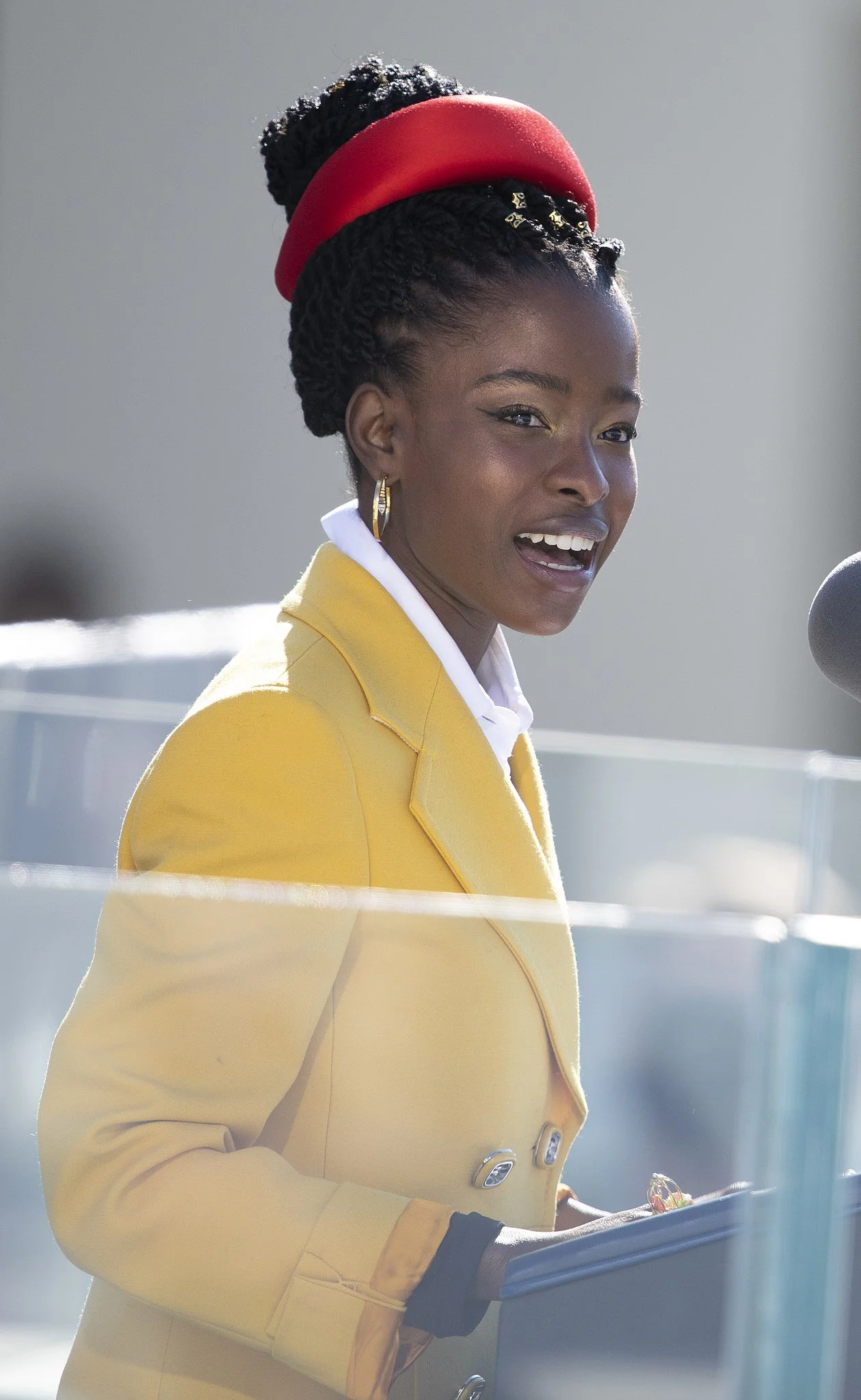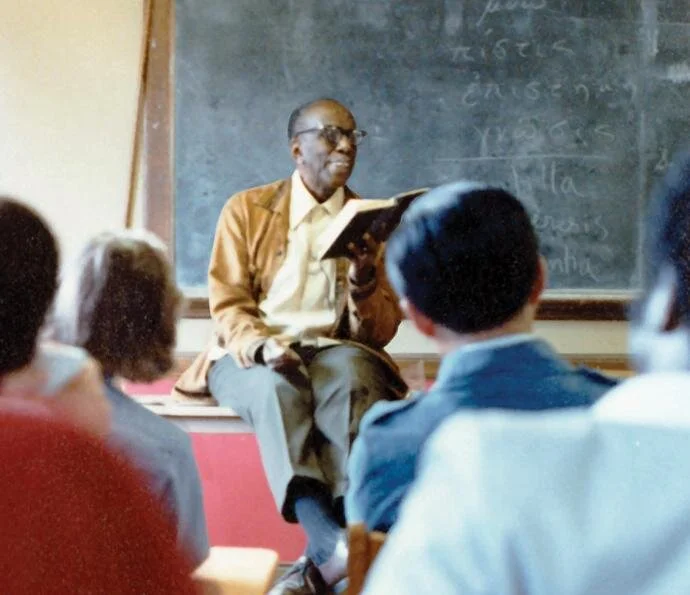Friday Reflection: What An Eminent Scholar-Rector Kept to Himself Until Late
Samuel David McConnell in old age
This is a two-part story with a surprise. The first recounts Dr. McConnell’s career from official sources. The second provides a different version of the same years from an autobiography that’s rarely discussed and opens many questions, including some raised by what I know of the end of his life.
Breathe: This one takes time!
Dr. McConnell in early years at St. Stephen’s
Dr. Samuel D. McConnell received high accolades as St. Stephen’s 4th rector during his lifetime and later. He spent 14 productive years there, from 1882 to 1896, devising new programs, building new structures, and electrifying the historic church, making St. Stephen’s the first in Philadelphia to do so. He also embraced the added rectorship of the Church of the Holy Comforter (1895). His sermons on troubling matters of life and religion drew crowds and consoled many, according to his successors. He left St. Stephen’s at age 51 for two successive rectorships, then lived in retirement for almost 30 years.
He was also a restless thinker. He earned a Doctorate of Divinity by 1891, one in Canon Law by 1901, and another in Law by 1920, according to the title pages of books available online. His publications were widely read, acclaimed, and republished. His History of the American Episcopal Church (1890) remained a standard for Episcopal seminaries for years.
His thinking evolved as he engaged with the New Biblical Criticism in its most heated years. By his 6th year at St. Stephen’s, to judge by a graduation sermon for Trinity College republished that summer in The Parish News (August 1888; philadelphiastudies.org), he proposed that science and religion were actually allies, not enemies. Both, he contended, are resilient and open to each other because life is dynamic. The 19th century in which they lived moved so fast that innovations were obsolete within a year. Christianity, he maintained, continues to respond to such change because it’s a living force. He pointed to shifts in religious thought and the rejection of many “religious truths” with scientific innovation throughout history. Christians were secure in the future of faith not because they reconciled the conflict between religion and science, or because champions of religion triumphed in the power struggle. Christianity, he asserted, is lodged with “the people” and has proved itself rooted in the heart of humanity. The Power of the Gospel provides answers to the “constant necessities of ordinary humanity” throughout time—as education or wealth do not. Nor does knowledge stifle either power or faith.
A bright celebration, this, of an engaged modern Christianity for an emerging generation!
Which is why reading his autobiography, published in 1922 when he was about 77, stunned me last week. Paraphrasing Augustine’s Confessions by calling it Confessions of an Old Man (Augustine wrote his in middle age), this account (online from HathiTrust.org) publicly presents a damning re-evaluation of the Church to its very core.
Unless otherwise noted, all that follows derives from Dr. McConnell’s Confessions.
Dr. McConnell opened with a bang. He entered the Ministry enthusiastically, he claimed, believing “that the church was the one organization in the world of divine institution, that it owes its origin to Jesus Christ, and that he was the unique Son of God. I have been reluctantly forced to ask myself whether any of these things is true” (p. 1). He questioned his own motives in supporting this possible lie: “Why am I a Christian?” (p. 4).
The analysis triggered by the New Biblical Criticism, he explained, launched this established defender of the Creed into an unwanted inquiry for the rest of his long career— in silence. He decided to publicly confess only when sure of his conclusions, after retirement but still within the Ministry. He hoped that, though his words might distress many, the Church would decide that he and others like him had a place in her Ministry. There was reason for assurance: The bibliography of Christian doubt and debate, including Augustine’s work, was huge and growing.
Dr. McConnell began his questioning with prayer and meditation, listening for a divine voice that never came. He also listened for the voices of an unseen community that affirmed what they heard. Again, silence.
He was not seeking a lost faith or God. To the contrary: He soon identified his own Christianity as a form of DNA. He simply WAS Christian, he said. This was no passive resignation. Despite divine silence, the book demonstrates, he retained an unshakable belief in a good God as his anchor and moral compass throughout the difficult quest.
His good God wouldn’t harm others, like the Old Testament God of vengeance, or permit the execution of the jailers “responsible” for Peter’s miraculous deliverance from prison. Or make flawed decisions like resurrecting Lazarus who preferred to await the afterlife in a happier death (as in Zola’s “Lourdes”).
McConnell refuted each of the pillars supporting the “stupendous magnitude of Christianity”—especially Scripture and the Gospels—and those elements that purportedly gave witness to Christ’s divinity and the supernatural powers granted to his followers, notably in the miracles.
Visiting different houses of worship reinforced several conclusions.
One such: “Religious life cannot be lived alone . . . this most intimately personal [part of life] is also the most social. No one can be a Christian by himself . . . It is the home of the solitary . . . the door must be open to all . . . The yearning for spiritual companionship is the credential” (p. 111). A “community of instinct” led to a church of fractious diversity; that’s the resilience, he argued, of the universal church with its many divisions.
His conclusion about the Church’s keystone, Christ: He’s a barely visible, if commendable historical figure around whom an unwieldy, contradictory edifice grew over time, space, and communities, using themes found in other religions, like the redemptive sacrificial God-Man.
Dr. McConnell’s vision of the future that closes the book is nonetheless strong stuff: “The goal to which religion, therefore, would seem to be moving is a Church of the Saviour-God, freed from bondage to history, untrammeled by Scripture, unharassed by definitions, open without question to all who “‘neath life’s crushing load” would find solace for their body and soul in symbolic union with the spirit and body of the broken God, “the promise of all religions, the cry of which makes all creeds one.” (p. 124).*
There is much to explore here, someday.
For all his initial reluctance to face new questions, Dr. McConnell seems impressively composed throughout Confessions, perhaps stabilized by his faith in the good God and his own faculties as he intellectually demolished the Church.
Except for his concern for his place in that community. His inconsistency on that point is remarkable. He wished to remain part of a Church that he’d openly declared a lie and its adherents liars or fools. How could he reconcile remaining a priest?
What happened next? Dr. McConnell published another autobiography 8 years later that I don’t find online: Immortability: An Old Man’s Conclusions (1930). Reviews report he revisited previous subjects. Did he offer new arguments or alternatives to those in Confessions? Did he address his place in life, the world, the afterlife?
West wall of the Furness Burial Cloister with the three McConnell memorial plaques (lowest row)
Given his conclusions in Confessions, why, as I know from church archives, did he ask St. Stephen’s to house his sons’ cremains around the time Confessions was published? What does it say about this congregation in the 1920s that he’d left 20+ years before? Why did they accept?
Dr. McConnell’s own funeral in 1939 also took place at St. Stephen’s, though he was Rector Emeritus elsewhere. His own cremains may have joined his sons,’ behind their respective memorials in the west wall of the original transept, now the Furness Burial Cloister.
What we do know is that, despite the damning conclusions that could have alienated the Church, Samuel David McConnell turned to, and was gathered into, its bosom in death. May he rest in peace.
—Suzanne Glover Lindsay, St. Stephen’s historian and curator
*The first quote is from Edmund Sears’ poem used for the Christmas carol “It Came Upon a Midnight Clear” (1849). The second, from a novel of 1900 by the “Female Kipling” Flora Annie Webster Steel, Hosts of the Lord, 1: 44 (Google Books, 1903 ed).











